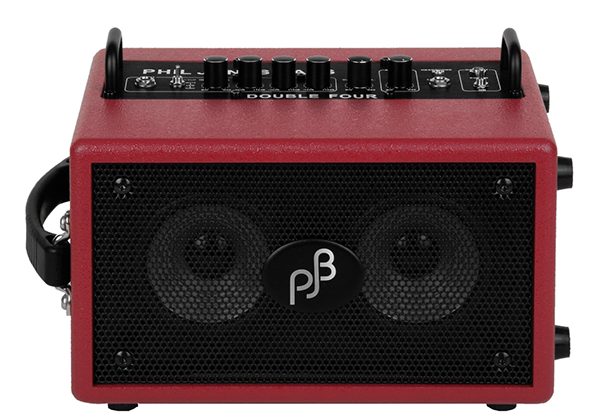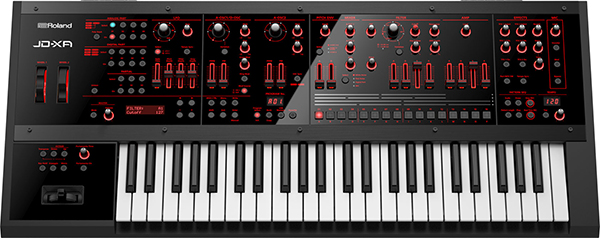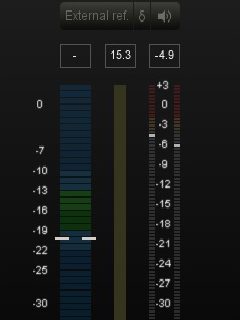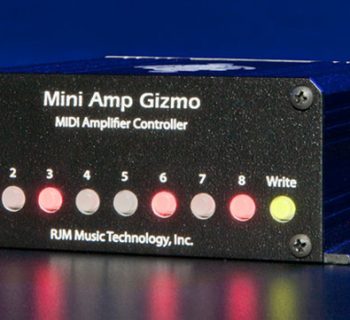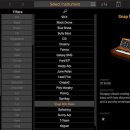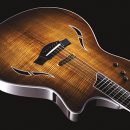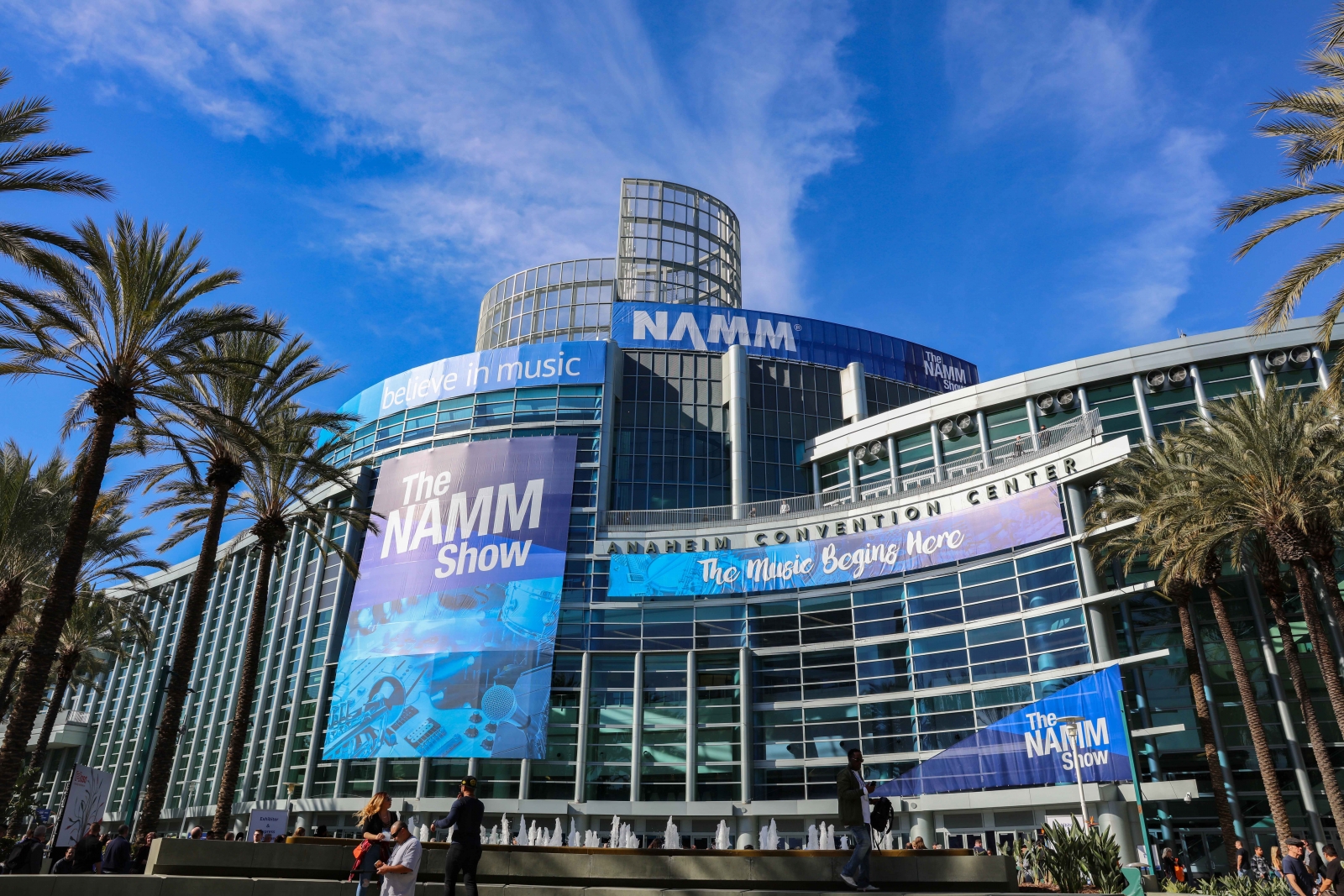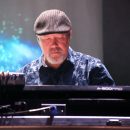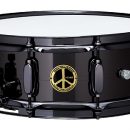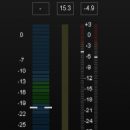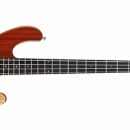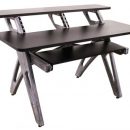 Phil Jones has been the pioneer of the compact bass amplifier for well over a decade, and his amps have impressed many bass players and listeners with the caliber of low end sound that could emanate from such a small form factor. It is his experience and passion as a bass player combined with a lifetime career in the audio engineering world that have enabled Phil Jones’ amplifiers to earn the respect they command today.
Phil Jones has been the pioneer of the compact bass amplifier for well over a decade, and his amps have impressed many bass players and listeners with the caliber of low end sound that could emanate from such a small form factor. It is his experience and passion as a bass player combined with a lifetime career in the audio engineering world that have enabled Phil Jones’ amplifiers to earn the respect they command today.
There are many instances and scenarios where you may find yourself in need of a great sounding, compact, and portable bass amplifier. When a call comes in to participate in a writing session or an acoustic jam, your cheap practice amp—although smaller in size—is still quite heavy, and bulky enough to be inconvenient for a quick subway trip or even a walk a few blocks away. (After a block, we had to switch the hand we carried it with so it wouldn’t get cramped up.) And on the occasion we found ourselves doing a small coffee shop gig, we were tempted to bring the smaller practice amp, only to find that it’s “just not quite enough.” Underpowered and sounding like a perfectly executed fart, we would then turn to options like running a DI pedal into the PA system.
The Phil Jones Bass Double Four Personal Micro Bass Amp provides a great solution to these problems. An extremely compact, truly portable, great sounding professional bass amplifier, suitable for home practicing, writing sessions and small, intimate gigs.
Features
The Phil Jones Double Four is one extremely compact bass amplifier. At just under nine pounds and with dimensions of 11” x 8” x 6.8”, it delivers 70 Watts (RMS) to two, proprietary PJB NeoPower four-inch speakers coupled with a “Rectangular Auxilliary Low Frequency Radiator (RALFR)” which augments the key bass frequency range between 30Hz and 150Hz. Each of the four-inch speakers are full-range drivers, and each driver is powered by its own independent PWM (Pulse Width Modulation) amplifier.
If you’re new to the world of Phil Jones Bass, you may be quick to write off four-inch drivers as sounding ridiculous, but you’d be the fool if you stopped reading now as small driver technology is the cornerstone of PJB technology and innovation. The PWM technology, along with the small speaker drivers and enclosure design are responsible for the delivery of quick and tight bass response. The theory is that larger speaker cones, because of their mass and surface area, take longer to react when a signal is received, as well as take longer to come to rest when the signal stops; thus a muddy response. The Phil Jones design results in a more precise rendition of the signal coming from the instrument without artifacts inherent from a large speaker.
The PWM technology also allows the amplifier to run at a lower temperature due to its efficient use of power. The Double Four is powered by an (included) external DC power supply, which also reduces the weight of the amplifier. (Please note: Use onlythe included power supply to avoid damaging the amplifier.) The DC Input jack is located to the extreme right on the front panel along with a Pwer on/off toggle. There is a bright blue power indicator LED.
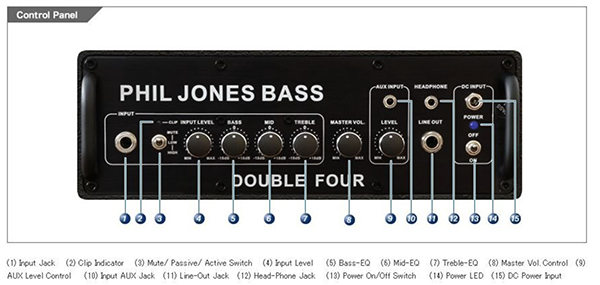 |
The Double Four is not an analog amplifier. All of the controls including levels and EQ are digital controls interpreted by an internal signal processor. There is a control panel on the top of the amplifier, and the amp has a single channel with one, quarter-inch input jack. A three-position toggle switch allows you to switch the input between HIGH impedance, LOW impedance, and MUTE. This gives the user the option to accommodate active or passive instruments or mute the signal altogether. All control knobs are black, anodized aluminum knobs with a smooth and slightly resistive potentiometer action. There is an Input Level control to adjust for varied input signals as well as a clip-warning LED to give you a nudge when the signal is too hot. There is a three-band EQ with individual center detented knobs for Bass, Mid and Treble, and finally a Master Volume knob.
To add to the amplifier’s versatility, there is an eighth-inch Aux input with an independent input level control knob. There is also an eighth-inch headphone jack and a quarter-inch Line Out jack.
To protect the speakers, there is a fine apertured metal grill over the four-inch drivers adorned with the PJB logo. The black, powder-coated style, textured enclosure is durable and acoustically designed for optimum frequency response and efficiency. There are two metal rails on the control surface to help protect the controls. The side-mounted carry handle is comfortable and convenient, and rubber feet on two sides of the enclosure allow for both vertical and horizontal placement.
There is no effects loop.
Usability
As an artist, songwriter, session soldier, and sideman, there are many situations as a bass player that call for a portable yet professional amplifier to handle low-volume bass work. Every aspect of the Double Four’s operation is as basic and intuitive as can be. The layout is perfect, with all controls accessible and visible. We had no problem using both active and passive basses with the amp.
From the practice amplifier aspect, the Double Four is small enough to fit inconspicuously on a desktop or bookshelf. Since the amplifier operates at such a low temperature, there is minimal need for ventilation. It is portable enough that you can effortlessly bring it to the couch, the patio, apartment balcony, or wherever you feel comfortable. This amp leaves you with no excuse not to practice! We found it easy to connect our iPhone via the aux input and jam along to tracks we were rehearsing. Bass instructors will appreciate the amp’s portability and versatility. (There is a matching gig bag available for purchase on the PJB website.)
Although the Double Four delivers a surprising amount of output for such a small amplifier, there are limitations. Small, intimate performances are a good fit for the Double Four, but it depends on the size of the venue. We liked that the amp could provide personal monitoring capabilities at a gig, while the Line Out was useful for sending our sound to the PA system.
As simple as the Double Four is, a lot of thought obviously went into the important features of this piece of gear.
Sound
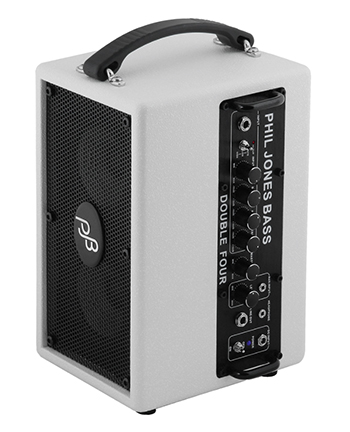 Although we were familiar with Phil Jones amplifiers, it was hard not to be somewhat skeptical looking at the physical size of the Double Four—especially since this particular design features four-inch speakers as opposed to the five-inch drivers that are used in many other PJB models.
Although we were familiar with Phil Jones amplifiers, it was hard not to be somewhat skeptical looking at the physical size of the Double Four—especially since this particular design features four-inch speakers as opposed to the five-inch drivers that are used in many other PJB models.
First, we wanted to do an evaluation of the Double Four as a practice amplifier. Part of this was not specifically testing to see how loud we could get it, but the amplifier’s ability to translate the tone of the bass and get a sound that is pleasing to the ear. A good sounding bass tone helps make you want to practice!
We started putting this little amp through its paces with an active MTD 635 six-string bass. We flattened the EQ on the bass and turned the volume all the way up. At a comfortable level, what we heard was precisely the sound of the unaltered, flat EQ, MTD 635 bass. Having a lot of experience with this bass, it was as if we plugged the bass directly into a recording console and were listening through quality studio monitors, complete with glassy highs, defined mids, and natural bottom end. We then adjusted the EQ only on the Double Four to explore its capability. We were easily able to dial in some additional bass and a slight cut of the mids, and we kept the treble flat to get a well-defined and slightly aggressive tone. Rolling back the treble and mids, we boosted the bass more and got a strong dub tone. Bringing up the treble, we were able to highlight the glassy highs.
The next bass we tried was a Hofner Club bass. This is a passive bass, so we switched the input select switch from Low to High. We hardly made an adjustment to the input level, and there was plenty of signal to spare. After flattening the EQ, again we heard the perfect rendition of an unadulterated Hofner bass through studio monitors. We boosted the low and mid EQ a touch and we experienced our bass in all its glory. We tried the amplifier using an array of different instruments, including a Fender P-Bass and a D’Angelico EX, and there wasn’t a bass the Double Four didn’t like. Even an old 1940s Kay upright bass with a David Gage Realist pickup sounded great!
It was difficult to find a bad setting on this amplifier. The EQ is extremely musical and useable. At reasonable volume, there is really no limitation to the sound you can get. The low B projection is full, with no drop-out, and is as even as the rest of the strings on a six string bass. Dialing in a vintage sound for the Hofner or a P-Bass was also simple.
We also experimented with a few effects. Particularly, we plugged in an Elctro-Harmonix Bass Micro-Synth to see how the Double Four would translate the sub frequencies as well as the gritty synth highs. The Double Four had no problem projecting this extremely complex sound at a reasonable volume, although we had to keep an eye on the clip LED and adjust our input and output levels accordingly. The Double Four is, in our opinion, the ultimate personal practice amplifier, whether you are just running through rudiments or testing out some realistic bass tones for your next project.
With each bass, we also did a parallel listen using the headphone output. The headphones we used were the Ultrasone Pro model 900i which are known as pristine reference headphones. The headphone signal was just as hi-fi as the amplifier itself.
IMPORTANT: The key thing to understand with the Double Four is that you must balance your input signal with the volume that you intend to listen. Although the Double Four is capable of significant output, just due to the laws of physics, there is only so much an amplifier of this size can handle. If you are going to pump the bass EQ frequencies, you will have to balance the input and output volume levels to a level that the speakers can handle.
Now that we established the Double Four’s pristine sound quality, we prepared ourselves to hear how far we could push it. Using the MTD 635, we played aggressively and gradually increased the master volume. We reached a reasonable volume before digging into the low end notes started to tax the speakers. However, when we played with a lighter touch even on the low B string, the low end filled the room beautifully while maintaining the hi-fi nuances of the MTD. We were clearly near the limits of the amplifier, but if we played to the amplifier, we were able to get even more out of it. It seemed like the more even we played, the more responsive the amplifier was, as if there was a built in compression circuit. We did the same thing with the Hofner. Due to the lower fundamental nature of the hollow-body bass, we reached the maximum usable volume level a bit sooner before speaker breakup, but the sound that was achieved at that level was perceived to be even louder than the MTD.
At a writing session, the Double Four fit in perfectly. It was small enough to carry, quick to plug in and set up, and we could effortlessly dial in the perfect sound with plenty of volume to spare. We also brought it to a small rehearsal, complete with drum kit and amplified guitar. It was not particularly aggressive music, with a small drum kit, and it worked very well—with a touch of volume to spare.
We also took this amplifier on a trial run at a small country/folk gig in a “sit down” venue with a corner stage. (In addition, we brought a larger sized combo amp, just in case the Double Four didn’t quite cut it.) The manual talks about the optimum placement of the amplifier and how it is recommended for best bass response to place the amp on the floor and close to a rear wall or corner for best bottom-end bass projection. The drummer was using a small four-piece kit (with brushes) and was situated in the corner of the stage. We placed the amplifier just left of the corner behind the drum kit. Although we didn’t hear it all too clearly on the stage, many who were listening for it commented on how well they heard the bass. For the next gig, I will probably situate the amplifier a bit closer to me and then take run the line out into the PA.
As an experiment, back in the studio environment we ran the line out signal directly into a DAW. The sound was exactly what we expected, with no extra noise or artifacts. Beyond using the Double Four as a preamp, this test gave us assurance that the signal quality was perfectly fine to record a live performance through a DI.
Again, we must understand the nature of this amplifier. For its size, it sounds pristine, and is clearly a professional grade piece of gear. But it’s not designed to do the same job as your larger live bass rig. It was designed to be the ultimate practice amplifier that can be used for small gig purposes. In these regards, the Phil Jones Bass Double Four excels.
Documentation and Product Support
The documentation on the website is very thorough regarding the operation of the Double Four. It goes over the basics and also explains some of the design characteristics in some detail. This helped us to understand the unique features of this amplifier. One of the points that the documentation stresses is proper placement of the amplifier on the floor with a wall behind it for greater bass projection. This was extremely helpful when experimenting in the performance setting.
One little flub was the explanation of the input toggle switch. The switch is labeled Mute, Low (low impedance) and High (high impedance). The manual says that it is Active and Passive mode. For those who may not know, it can be confusing that low impedance refers to active pickups and high impedance refers to passive pickups.
Phil Jones Bass offers a two-year warranty on the Double Four.
Price
The Phil Jones Bass Double Four BG75 (MSRP $559.99) sells for approximately $450 both on their website and at designated PJB dealers. At first, you might think that it is a bit costly for merely a practice amplifier. There are other small-format amplifiers made by reputable companies in this price range. However, none come even close to this amp’s featherweight, nine-pound package.
We have gotten more use out of the Double Four in the last few months due to its portability and sound quality than any practice amp we ever owned. This convenience is hard to match. If the Double Four was your first practice/micro amp, it would probably be your last.
Contact Information
Phil Jones Bass
www.philjonesbass.com
Overall Rating - Product Summary

